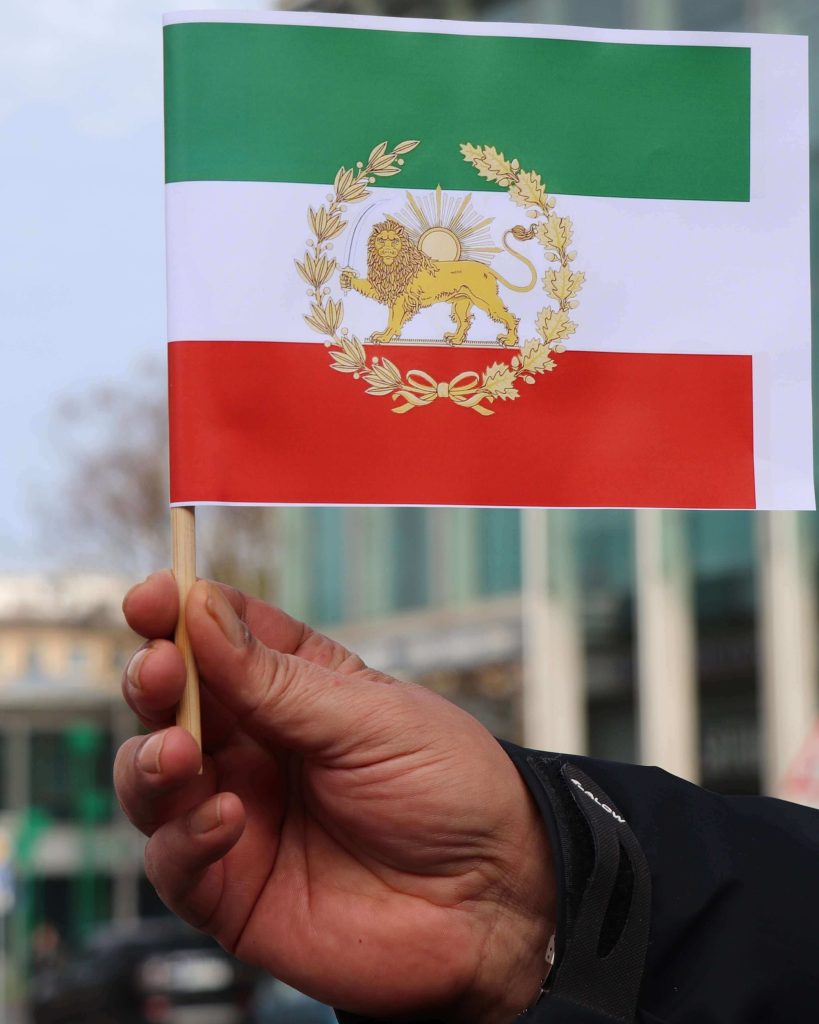Introduction
Welcome to a journey through the captivating world of the Iran flag. In this article, we will delve into the history, symbolism, and intricate design of this national emblem. From the lush green to the radiant red, each element has a story to tell. Let’s unfurl the colors and narratives that make the Iran flag a symbol of pride and heritage.
Iran Flag: A Symbol of Identity and Pride
Table of Contents
The Origins of the Iran Flag
Discover the roots of the Iran flag, dating back to ancient Persia. Explore how this emblematic flag has evolved over centuries, reflecting the cultural and historical changes that shaped the nation.

Evolution of Design: From Ancient Persia to Modern Iran
The Colors of the Iran Flag
Dive into the symbolism behind the vivid colors of green, white, and red on the Iran flag. Uncover the historical context and cultural significance that each color holds, symbolizing unity, peace, and courage.
Green: Fertility and Growth
The green band represents not only the lush landscapes of Iran but also symbolizes fertility and growth. It is a visual testament to the nation’s agrarian heritage and its commitment to sustainable development.
White: Unity and Peace
The white band embodies unity and peace, capturing the aspirations of a nation striving for harmony. It reflects the collective desire for a peaceful coexistence within Iran and on the global stage.
Red: Courage and Martyrdom
Bold and assertive, the red band symbolizes courage and martyrdom. It pays homage to the countless individuals who sacrificed their lives for the nation’s independence and sovereignty.
Green, White, and Red: The Palette of Iranian Identity
Understanding the Design
Colors of Significance
The tricolor design of the Iranian flag consists of three horizontal bands: green, white, and red. Each color holds profound cultural significance, representing growth, peace, and courage, respectively. The harmonious blend of these hues mirrors Iran’s commitment to unity and progress.
Emblematic Motifs
At the center of the white band, a prominent emblem, features a stylized script that spells out “Allah” in the shape of a stylized tulip. This calligraphic symbol not only signifies the country’s Islamic roots but also adds a touch of artistic elegance to the overall design.
The Emblem: A Closer Look
Explore the central emblem, a captivating blend of geometric shapes and symbols. Each element holds a profound meaning, representing the nation’s values, aspirations, and unity.
Symbolic Embrace: Decoding the Iran Flag’s Central Emblem
Iran Flag Etiquette
Understand the proper protocols and etiquette associated with the Iran flag. Learn about the occasions and events where this iconic flag takes center stage, fostering a sense of unity and patriotism.
Respecting the Colors: Etiquette and Protocol
Historical Moments: Iran Flag in Action
Embark on a historical journey, revisiting key moments where the Iran flag played a pivotal role. From declarations of independence to moments of unity, witness the flag’s enduring presence.
Flags That Shaped History: Iran Flag’s Role in Key Moments
Iran Flag in Modern Culture
Explore how the Iran flag continues to be a symbol of national pride in contemporary culture. From art to fashion, witness the flag’s influence on various aspects of Iranian society.
Beyond Borders: Iran Flag’s Influence in Modern Culture
Cultural Significance
Calligraphy as Art
The calligraphic emblem at the heart of the flag is not just a religious symbol but also a celebration of the artistic prowess embedded in Iran’s cultural heritage. Calligraphy, an integral part of Persian art, is a testament to the nation’s rich history of creativity and expression.
Tulip: A Floral Allegory
The tulip-shaped script ingeniously intertwines aesthetics with symbolism. The tulip, often associated with perfection and beauty, adds a layer of elegance to the emblem, showcasing the fusion of art and culture in Iran.
Historical Evolution
Pahlavi Dynasty Influence
The genesis of the current flag can be traced back to the early 20th century during the Pahlavi dynasty. Replacing the Qajar dynasty’s lion and sun emblem, the tricolor design was introduced, signaling a shift towards modernization while still preserving the essence of Iran’s cultural heritage.
Post-Revolution Transformation
Following the Islamic Revolution in 1979, the Iranian flag underwent subtle yet profound modifications. The emblem was added, symbolizing the newfound Islamic Republic. This transformation marked a pivotal moment in Iran’s history, aligning its political identity with its cultural and religious roots.
FAQs: Unveiling Common Queries
What do the colors of the Iran flag represent?
The green symbolizes growth and hope, the white signifies peace, and the red embodies courage and martyrdom.
How has the Iran flag changed over time?
The flag has undergone subtle modifications, reflecting shifts in political ideologies and cultural values.
Is there a specific way to fold the Iran flag?
While there’s no strict rule, folding it into a triangle with the emblem displayed is a common practice.
Can the Iran flag be used for personal purposes?
While discouraged, using the flag for personal use is not strictly prohibited, but it should be done respectfully.
What is the significance of the emblem’s design?
The central emblem incorporates various symbols, representing Iran’s rich history, Islamic identity, and the spirit of martyrdom.
Are there regulations for displaying the Iran flag?
Yes, there are guidelines for proper flag display, emphasizing respect and dignity.
Conclusion
In conclusion, the Iran flag is not just a piece of fabric; it is a tapestry woven with the threads of history, culture, and national pride. Its vibrant colors and symbolic design tell a story that resonates with the hearts of Iranians worldwide.